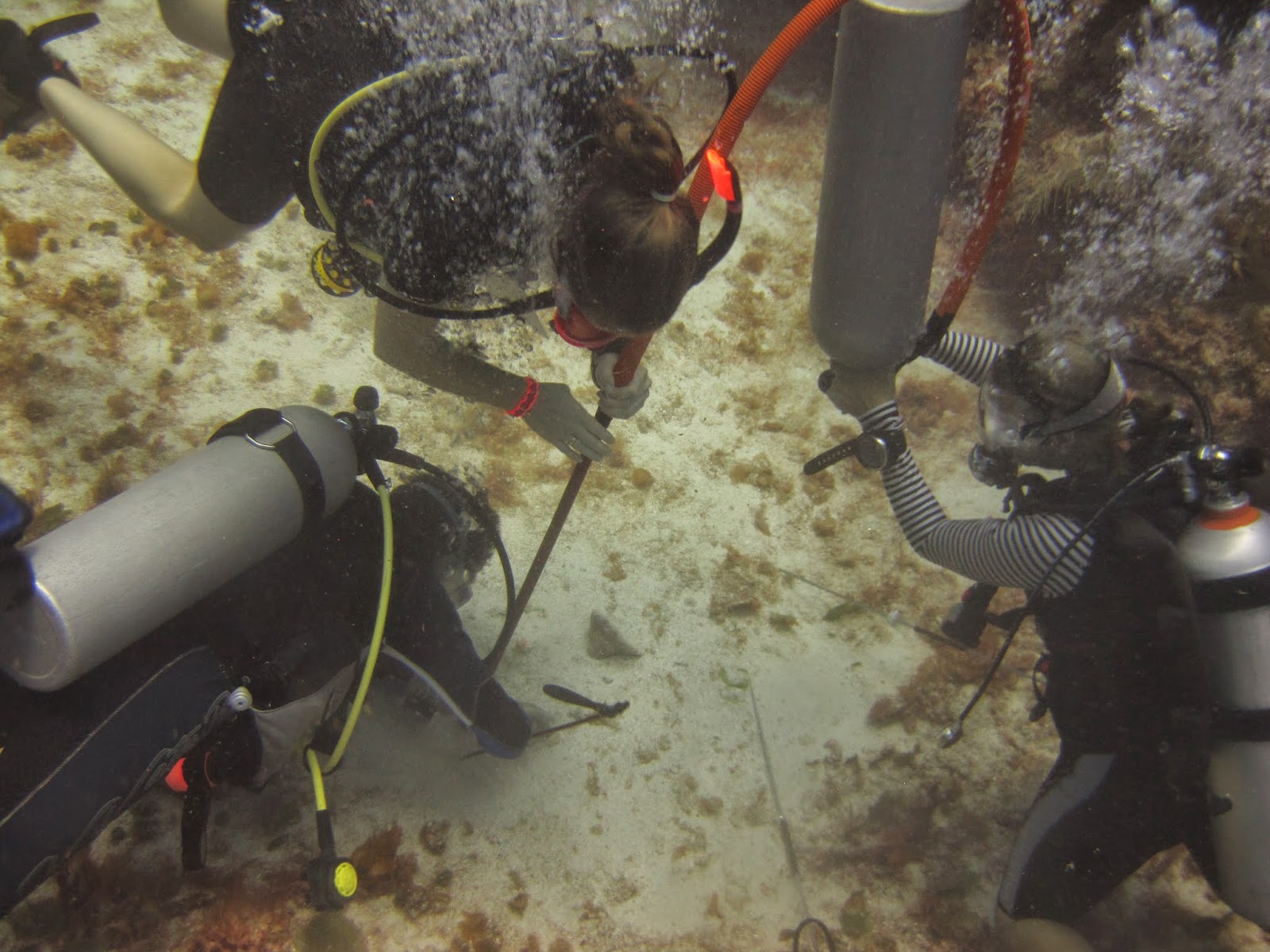Today’s Science Blast
Digging a hole underwater, sounds simple enough right?
Well today we wanted to give it a go, in preparation for the sinking of our structures later on this month. Our first structure has four bases, and each needs to be buried a metre under the sandy bed to ensure that all of our hard work doesn't get swept away in a storm.
An extra tank, some plastic tubing, and a first stage was all we needed to drill a hole in the seabed. We loaded ourselves and our kit onto the dive boat, located our reef, and dropped down.
Now, we had expected the dive to be somewhat ‘trial and error’, but what we hadn't planned for was the large quantity of dead stag coral in the sediment. Our potential site for the structure is a sandy bed sheltered by a reef either side. We chose the area because of the proximity to natural Acropora populations, which are the healthiest growing in the area, as well as the water quality, temperature and salinity. Today our choice of site was compounded by the discovery of lots of stag coral remnants in the sand and deeper sediment at our site proving that historically a large amount of Acropora has been growing here.
We began the digging by placing ourselves firmly in the seabed and positioning the end of the tube into the sand. The equipment works by pushing pressurised air from the tank down through the first stage and tubing into the seabed. The pressurised air displaces the sand, making a hole quickly and with minimum disturbance, just a little sand in the face to deal with.
As we pushed down it became clear that there was something in the way. In the small hole we had created, just a couple of feet under the sandy bottom, there were hundreds of fragments of dead staghorn coral. Some had disintegrated down into small shards of brittle coral, showing that they had been there some time, whilst larger less degraded parts demonstrated that more recently there has been living Acropora growing in this spot.
The discovery of Acropora up to 3 foot under the sand supports our hypothesis that Acropora historically grows in this particular area, and indicates that our coral nursery will be well placed here. There were so many fragments that there can be no doubt that in the past Acropora was thriving here.
Happy with our discovery, we finished up taking some more water samples and measurements of living staghorn, and ascended to the surface, enthused with our unexpected find.
As one of my first science dives here at Expedition Akumal, this was pretty exceptional. We found even more evidence to support the project, got some excellent data, and tested out how we will sink the base of the first structure.
Our video ‘Science Blasting’ can be viewed on the Expedition Akumal YouTube Channel
By Jenny Mallon
New member of Team Expedition Akumal
New member of Team Expedition Akumal

